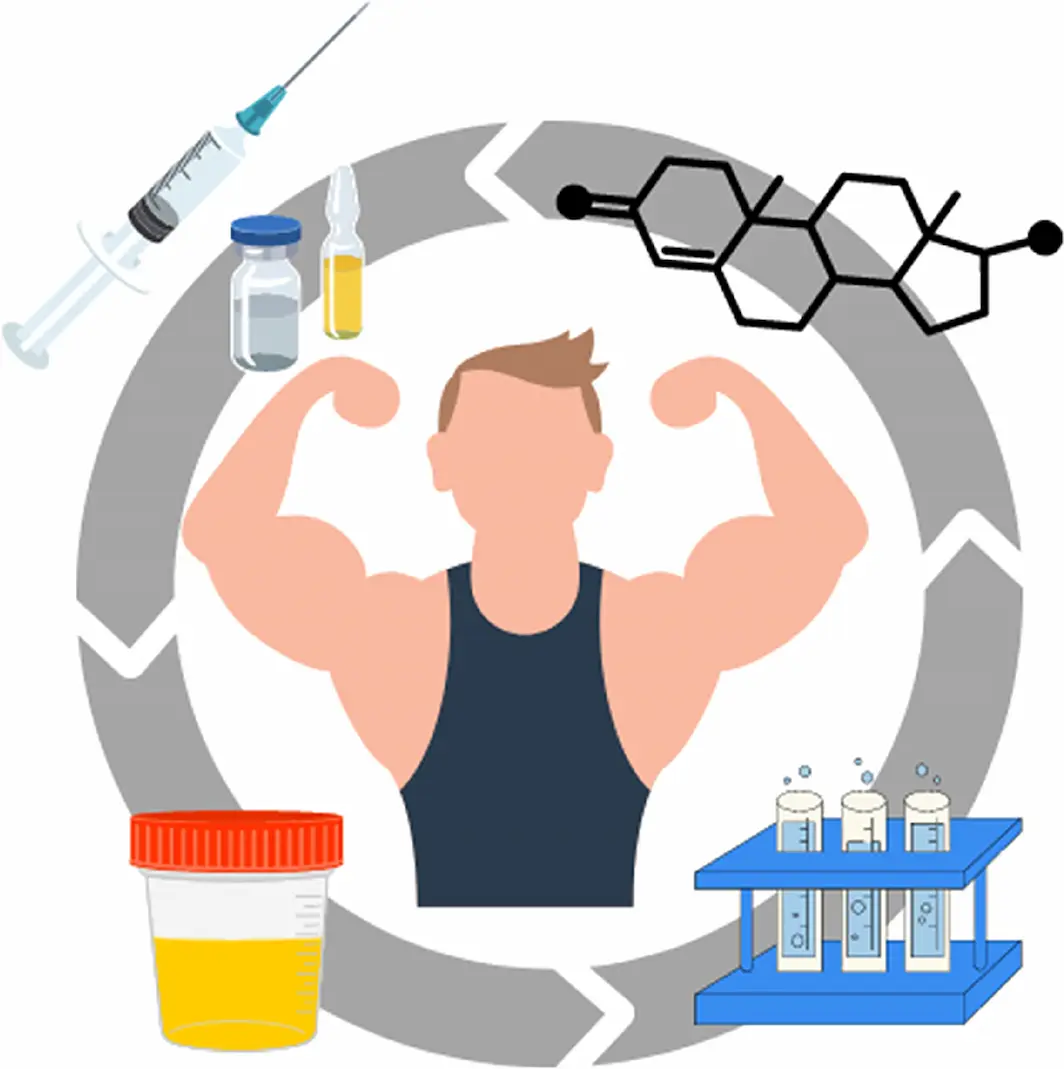Steroid use in amateur and professional sports has become a hot topic due to the competitive advantage these substances can provide. Anabolic-androgenic steroids, a type of performance-enhancing drug, are particularly notorious for their capacity to increase muscle mass and physical strength. While professional athletes are often the focus of steroid abuse scandals, the use of these substances at the amateur level raises serious concerns regarding health, ethics, and fairness in sports.
At the professional level, athletes often encounter rigorous drug testing protocols designed to deter and detect the use of steroids. In contrast, amateur athletes may face less stringent testing, presenting both ethical questions and health risks to those who choose to use these substances. Beyond physical effects, the psychosocial impact of steroid use, such as body image issues and the pressure to perform, affects individuals across all levels of sports.
Quick Summary
- Steroids can offer competitive advantages but raise health and ethical concerns.
- Professional athletes face more frequent drug testing than amateurs.
- Steroid use impacts physical and psychosocial health across all athletic levels.
Overview of Steroid Use in Amateur and Professional

The use of steroids in sports ranges widely from professional levels to amateur standings, including high school and college athletes. This overview examines both the prevalence of steroid use across different athletic echelons and the legal framework governing their use.
Prevalence Among Different Athletic Levels
Steroid use is more prevalent in professional sports, however, it is not limited to it. Studies indicate recreational bodybuilders and athletes in lower competitive tiers, including some high school and college students, also report using these substances. For example:
- Professional: Testing regimens are stricter, but use is sophisticated.
- College: Usage rates vary, often lower than professional but higher than high school.
- High School: Less common, but still a concern, particularly among boys involved in strength-based sports.
Legal Status and Regulations
The legal aspects surrounding steroids are complex. In many regions, they are controlled substances, making un-prescribed possession or distribution illegal. Globally, the World Anti-Doping Agency (WADA) oversees the fight against drugs in sports, implementing a set of prohibited substances and methods that member countries adopt.
- Professional: Strict adherence to WADA codes; bans and sanctions for violators.
- College/High School: Governed by national bodies like the NCAA, which often defer to WADA guidelines.
- Recreational: Legal consequences outside of competitive sports vary by jurisdiction.
References
- World Anti-Doping Agency (WADA) Prohibited List: https://www.wada-ama.org/en/content/what-is-prohibited
Understanding Steroids

Steroids are a class of compounds that influence various physiological processes, often mimicking naturally occurring hormones in the body. Their use in both amateur and professional sports has raised significant ethical and health concerns.
Types of Steroids
- Anabolic-Androgenic Steroids (AAS): These are synthetic variants of the primary male sex hormone, testosterone. They support muscle growth and the development of male sexual characteristics.
- Growth Hormones: Though not steroids, these hormones are often grouped with them. Growth hormones stimulate growth, cell reproduction, and cell regeneration in humans.
- Selective Androgen Receptor Modulators (SARMs): These are compounds that mimic anabolic agents like steroids but target specific tissues, potentially reducing undesirable side effects.
Mechanisms of Action
- Anabolic Effects: Anabolic steroids promote the growth of skeletal muscle and the development of male sexual characteristics through protein synthesis enhancement.
- Androgenic Effects: They involve the development of male secondary sexual characteristics such as a deepened voice, facial hair, and changes in genital size.
- Hormonal Interaction: These steroids mimic the action of natural hormones and bind to specific receptors in the body, altering the body’s natural hormone levels and metabolic processes.
Legal Supplements vs. Steroids
- Dietary Supplements: Refers to products such as vitamins, minerals, herbs, amino acids, and enzymes. They are legal and intended to supplement the diet.
- Legal Status: Anabolic-androgenic steroids and growth hormones are controlled substances in many countries and can only be legally obtained via prescription.
- Usage Differences: Legal supplements typically support the body’s nutritional needs and can help with muscle recovery, while steroids are used for their ability to enhance performance and physique beyond natural limits.
Effects of Steroid Use

Steroid use can dramatically alter an athlete’s performance and physical health. These changes can be both positive in terms of enhanced performance metrics and potentially negative, presenting various health risks.
Enhancement of Athletic Performance
Anabolic steroids are known to significantly increase muscle mass and strength, providing users with a substantial boost in energy and power. Athletes may experience the following improvements:
- Strength Gains: Steroids facilitate greater power output and lifting capacity.
- Muscle Development: Rapid increases in muscle size and skeletal muscle growth occur.
- Energy Enhancement: Users often report feeling more vigorous during workouts.
Potential Health Risks
On the flip side, anabolic steroids bear a wide array of adverse effects ranging from short-term issues like acne to long-term cardiovascular risks. Here are some health complications associated with steroid misuse:
- Cardiovascular Diseases: Increased risk of stroke, heart attack, and atherosclerosis due to raised blood pressure and changes in cholesterol levels.
- Hepatic Damage: Potential for liver damage and conditions such as liver tumors.
- Reproductive System Alterations: Steroids can cause significant hormonal imbalances, affecting reproductive functions.
Table: Key Health Risks of Steroid Use
| Risk Category | Specific Conditions |
|---|---|
| Cardiovascular | Heart Attack, Stroke, Atherosclerosis |
| Hepatic | Liver Damage, Tumors |
| Dermatological | Acne flare-ups |
| Reproductive System | Hormonal Imbalance, Fertility Issues |
References
Detection and Deterrence

Effective detection and deterrence strategies are crucial in distinguishing between doping practices in amateur and professional sports levels. These strategies ensure the integrity of the sport is maintained by conforming to a set of rigorous standards.
Testing Methods
The primary tools for detecting doping at both amateur and professional levels are liquid chromatography and mass spectrometry. These methods allow for precise detection of banned substances in an athlete’s biological samples.
- Liquid Chromatography: Separates the components of a mixture to detect prohibited substances.
- Mass Spectrometry: Identifies the specific molecular structure, and amount, of these substances.
Together, they form a reliable approach to testing. The advancement of detection methods has also given rise to the Athlete Biological Passport (ABP), which monitors selected biological variables over time that indirectly reveal the effects of doping rather than detecting the doping substance or method itself. The ABP can demonstrate the effects of blood doping, for instance.
Doping Control and Penalties
Doping control is the process of testing athletes to detect the presence of banned performance-enhancing drugs.
- Sanctions for Positive Tests: Upon detection of prohibited substances or methods, sanctions can range from a warning to a lifetime ban, depending on the severity and the level at which the athlete competes.
- Biological Passport Violations: Athletes found to have anomalies in their Biological Passport can face similar repercussions as those tested positive for a specific banned substance.
Strict penalties serve both as punishment and as a deterrent to prevent athletes from considering the use of performance-enhancing drugs.
References
- “Liquid Chromatography – Mass Spectrometry”, National Library of Medicine, https://pubmed.ncbi.nlm.nih.gov/24000985/
Psychosocial Aspects of Steroid Use

The psychosocial aspects of steroid use involve complex consequences and societal views that can lead to significant psychological issues and public stigma. These effects vary between amateur and professional athletes due to differing levels of exposure and scrutiny.
Psychological Consequences
Steroid use can lead to a wide range of psychological issues. Individuals may experience mood swings or heightened aggression, commonly referred to as ‘roid rage.’ Studies have consistently linked anabolic steroid use with an increased risk of psychopathology, including depression and anxiety disorders. For instance, steroid users may exhibit behaviors consistent with addiction and withdrawal when attempting to cease usage.
- Behavior: Hyper-aggressiveness and impaired judgement.
- Depression: May result from hormonal imbalances caused by steroid use.
- Anxiety: Users often worry about the legal implications and health risks.
Athletes often report altered body image perception—a key driver for steroid use—stemming from societal and personal pressures to maintain an ideal physique.
Public Perception and Stigma
The community’s views on steroid use often oscillate between concern and condemnation. This leads to significant stigma associated with use, particularly as it pertains to the sportsmanship and legitimacy of both amateur and professional sports.
- Stigma: Often manifests as negative labelling and social exclusion.
- Community: Can show divided opinions, from supporting athletes to advocating for clean sport.
Professional athletes caught using steroids face public scrutiny that can result in lost endorsements and tarnished reputations. In contrast, at the amateur level, users may engage in illicit drug use more discreetly due to less media attention but still encounter community-led disapproval. Both levels suffer from the ripple effects of stigma, impacting mental health and social standing.
Frequently Asked Questions

The following questions address important aspects of steroid usage in athletic contexts, providing a comparative look at amateur and professional levels, and discussing the regulations and controversies surrounding their use.
What are the prevalence rates of steroid use among amateur versus professional athletes?
Prevalence rates of steroid use differ significantly between amateur and professional athletes. Amateur athletes may use steroids at lower rates due to less stringent testing and lower stakes. In contrast, professionals face rigorous testing, leading to a reduced incidence; however, those who use often do so more systematically to evade detection.
In which sports is the use of steroids most common?
Steroid use is most common in sports that value strength, speed, and muscle mass, such as weightlifting, bodybuilding, football, and track and field. These sports have historically experienced more instances of steroid use due to the competitive advantage these substances can provide.
What are the main reasons for the prohibition of steroid use in competitive sports?
The main reasons are health risks to athletes, the desire for a level playing field, and the moral standpoint that performance should be based on hard work and natural talent. Protective regulations are enforced to maintain fair competition and integrity within sports.
What arguments exist for and against the legalization of steroids in professional sports?
Arguments for legalization include the ability to better regulate and monitor use and claims that adult professionals should have sovereignty over their body choices. Arguments against focus on health risks, the potentially coercive environment it could create for clean athletes, and the erosion of traditional sportsmanship values.
How significant is the use of steroids in professional bodybuilding compared to other sports?
The use of steroids in professional bodybuilding is quite significant, often considered more widespread than in other sports. Bodybuilding’s emphasis on muscle size and definition has led to a higher acceptance and prevalence of performance-enhancing drugs within both amateur and professional levels.
Are there any circumstances under which steroid use is permitted in professional sports, and what are the regulations?
Steroids can be permitted under Therapeutic Use Exemptions (TUE) when athletes have a legitimate medical condition that requires their use. The regulations for TUEs are strict, requiring thorough documentation and approval by relevant sports authorities to prevent abuse of the system.
Dr. Grant Fourie, a specialist in male hormones, is based in Cape Town, South Africa. He provides comprehensive treatments for conditions related to low testosterone, such as erectile dysfunction, fatigue, and mood changes. His methods include hormone replacement therapy and other modern treatment options.
Contact me via email or phone to book personal appointment in my clinic: The Village Square, Cape Town - South Africa



